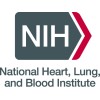
Safety of SCH 530348 in Subjects Undergoing Non-Emergent Percutaneous Coronary Intervention (Study...
Arterial Obstructive DiseasesCoronary DiseaseThe object of the study is to determine whether different doses of SCH 530348, when added to standard medical care in persons undergoing percutaneous coronary intervention, will increase the risk of bleeding. A secondary objective is to determine whether patients treated with SCH 530348 have fewer cardiac events such as heart attack, bypass surgery, or death compared with those persons treated with the standard of care.

Prevention of Events With Angiotensin-Converting Enzyme Inhibitor Therapy (PEACE)
Cardiovascular DiseasesCoronary Disease3 moreTo determine whether the addition of angiotensin converting enzyme (ACE) inhibitor to standard therapy in patients with known coronary artery disease and preserved left ventricular function will prevent cardiovascular mortality and reduce the risk of myocardial infarction.

Optical Coherence Tomography Guided Percutaneous Coronary Intervention for Drug-eluting In-stent...
CHD - Coronary Heart DiseasePercutaneous Coronary Intervention1 moreThis study is a prospective, registry trial aimed to compare the clinical and angiographic outcomes of OCT-guided and angiography-guided PCI in patients with coronary DES-ISR.

Multi-modality Imaging in Acute Myocardial Infarction
Acute Myocardial InfarctionSTEMI2 moreThe goal of this study is to use three (3) different imaging techniques:Fractional Flow Reserve (FFR) allows precise measurement of blood flow in the arteries to the heart, and is more reliable than pictures alone to determine the significance of blockages in the heart; Near Infra-Red Spectroscopy-Intravascular Ultrasound (NIRS IVUS) provides information about the amount of lipid and cholesterol in the plaque, and plaque volume; and Optical Coherence Tomography (OCT) allows physicians to assess tears in the surface of plaque and plaque thickness; to evaluate high risk non-infarct-related coronary lesion in patients who have suffered a recent heart attack, underwent successful opening of the artery with a stent, and have blockages greater than or equal to 50% in one or more of the other arteries to the heart; and to correlate this findings with cardiovascular outcomes at 1 year.

How Does Antiretroviral Therapy Affect Coronary Atherosclerosis: A Serial CT Study
Coronary Artery DiseaseHivCombined antiretroviral therapy (cART) is thought to promote coronary artery disease via a number of mechanisms: abnormal lipid profiles, endothelial dysfunction, hypertension, insulin resistance and renal impairment are the main pathological mechanisms driving atherosclerosis as a consequence of cART. An association between protease inhibitors and increased cardiovascular disease risk has been shown in many large cohort trials. CT Coronary Angiography (CTCA) is now widely used to assess for the presence of atherosclerosis, typically in patients presenting with chest pain. This imaging technique allows visualisation of the coronary arteries and quantification of any atherosclerotic disease that may be present. This technique is being increasingly used as a surrogate for cardiovascular disease risk. HART CT is an open label, prospective, randomised-control pilot study to investigate the feasibility of performing a future appropriately powered multi-centred randomised control trial using CT based outcome data as a surrogate for cardiovascular disease risk. Participants will be randomised to either continue their usual cART or switch to Biktarvy (a fixed dose combination of bictegravir, emtricitabine and tenofovir alafenamide). A baseline CT scan will be performed. If there is any evidence of atherosclerosis a further CT scan will be performed at the end of the study (approximately 48 weeks). This will allow quantification of any change in coronary artery plaque burden or characteristic. Participants will be also followed up for any changes in metabolic health.

Long-term Radial Artery Occlusion in Coronary Diagnosis and Intervention Via Distal Radial Approach...
Coronary Artery DiseaseDistal Radial Artery1 moreRandomized-controlled trial to comparison of the long-term radial artery occlusion in coronary diagnosis and intervention via distal vs conventional radial approach

Differential Effect of High (200μg/kg/Min) Adenosine Dose on Fractional Flow Reserve in Patients...
Coronary Artery DiseaseFractional flow reserve (FFR) is an established invasive method for assessing the physiological significance of coronary artery stenosis. However, in recent studies it has been observed and reported some degree of variation in the fraction of the coronary artery to the aortic pressure (Pd / Pa) during the infusion of standard adenosine dose (140mg/kg/min). The observed variation may be attributed to a failure to achieve maximal hyperemia with the normal dose. The administration of adenosine at a higher dose (200μg/kg /min) may influence coronary flow reserve (FFR) eliminating Pd / Pa variation during adenosine infusion. This is a prospective study which will be conducted in patients after coronary angiography with at least one angiographic lesion ≥50% in coronary vessels. Patients after written consent will undergo assessment of lesion severity with FFR under a three-minute infusion of adenosine 140mg/kg/min. In patients during steady state hyperaemia (determined by visual assessment) exhibiting variation in Pd / Pa ratio ≥ 0.05 (e.g. difference of max Pd/Pa minus min Pd/Pa) the examination will be repeated after 5 min with three-minute infusion under high dose adenosine (200mg/kg/min). The minimum ratio Pd/Pa per 3 beats will be offline analyzed. The FFR during steady hyperemia state is defined as the average of the minimum ratio Pd / Pa per three beats.

Optimal Lesion Preparation With Non-compliant Balloons Before Implantation Of Bioresorbable Scaffolds...
Coronary Artery DiseaseAngina2 moreStudy aim : To compare a novel strategy of lesion preparation with noncompliant balloons before implantation of BVS (Bioresorbable Vascular Scaffold). Hypothesis: Predilatation with non-compliant balloons could facilitate optimal deployment of BVS. By achieving good scaffold apposition a need for post-dilatation could be significantly reduced. This is expected to result in better short- and long-term outcomes.

HeartHab, Can a Patient-tailored Application Support Coronary Artery Disease Patients During Rehabilitation?...
Coronary Artery DiseaseThe HeartHab study is a pilot trial in which coronary artery disease patients (n = 15-30) are given the HeartHab application. The HeartHab application is a smarthphone based mobile application that serves as a secondary prevention tool, to support cardiac patients after their phase II cardiac rehabilitation program. During study period (4-6 weeks), participating patients will be asked to use the application. HeartHab includes a module devoted to therapy compliance, one to exercise training prescription and one to risk factor control. HeartHab aims to motivate the patient to improve his/her self-management skills and hence decrease cardiovascular morbidity (and mortality). Motivational aspects and usability data will be collected during study period by means of app logs and/or questionnaires/interviews.

cPSTA System CADLAD Study
Coronary Artery DiseaseThis study is primarily designed to collect resting phase signals from eligible subjects using the Phase Signal Recorder (PSR) prior to coronary angiography to machine learn and test an algorithm for detecting the presence of significant coronary artery disease in symptomatic adult patient.
